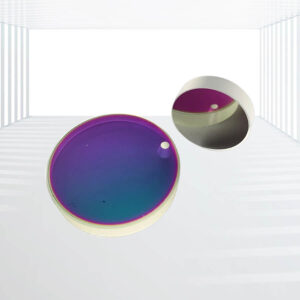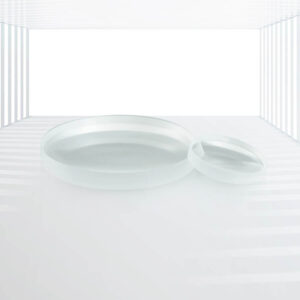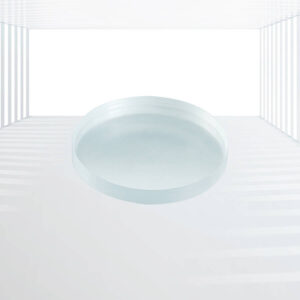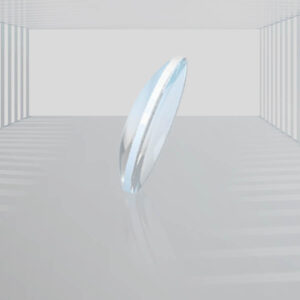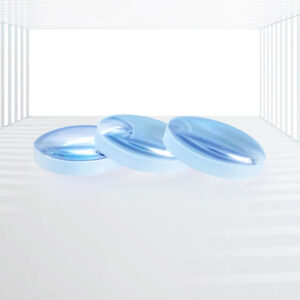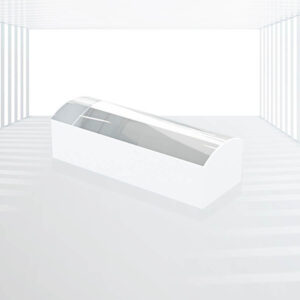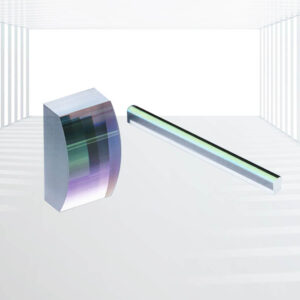Half-Ball Lenses
Compact Design:
The half-ball shape, with one flat surface, allows for easy integration and mounting in space-constrained environments. This compactness not only saves space but also contributes to potentially reduced production costs.
Versatility:
Half-ball lenses can be interchanged with full ball lenses depending on the specific requirements of an application. This versatility makes them suitable for a wide range of optical systems.
They can be manufactured from various optical materials, including BK7, fused silica, sapphire, etc., each offering unique optical properties and performance characteristics.
High Optical Quality:
Precision manufacturing processes ensure that half-ball lenses achieve excellent surface accuracy and low roughness, critical for high-quality optical performance.
Kingwin Optics can achieve surface quality ratings as low as 20/10 Ra1.2nm, indicating a highly polished surface.
Uniform Illumination and Focusing:
Like full ball lenses, half-ball lenses can focus or collimate light, depending on the geometry of the input source, providing uniform illumination and focusing capabilities.
Customizability:
Kingwin Optics often offer a range of diameters (from 0.25mm to 200mm or more) and can customize lenses to meet specific application requirements, including surface coatings and dimensional tolerances.
Applications: Fiber Optic Communication, Miniature Optics,Scientific Research and Industrial Inspection, etc.
Ball Lenses are a specialized type of biconvex lenses that adopt the geometry of a sphere, featuring spherical surfaces across their entire perimeter. They are manufactured from a single material, with optical transmission tailored to the specific wavelength region of interest. The primary function of ball lenses is light collimation/coupling for optical fibers, such as laser-to-fiber coupling and fiber-to-fiber coupling. They also offer versatile applications in miniature optics, including barcode scanning, sensors, or as objective lenses, among others. Ball Lenses can be regarded as pre-forms of aspheric lenses.
One notable advantage of a ball lens is its short Back Focal Length (BFL), which minimizes the distance from the optic to the fiber. This trait is particularly beneficial in scenarios with limited installation space, and the compact dimensions can simultaneously reduce production costs. Furthermore, the rotational symmetry of a ball lens simplifies the process of alignment and positioning.
Specifications:
| Materials | Sapphire, N-BK7, UVFS, Ruby, Ge, ZnSe, High-Refractive-Index Glass |
| Sphericity | Standard 2.0μm |
| Diameters | 0.3mm-300mm |
| Irregularity (@633nm) | λ/4 |
| Working Wavelength Range | UV to IR |
| Lens Type | Half Ball Lens |
| Surface Quality | 40/20 S/D |
| Coating | None or Custom AR Coatings |
Features:
1.Compact Design:
- The half-ball shape, with one flat surface, allows for easy integration and mounting in space-constrained environments. This compactness not only saves space but also contributes to potentially reduced production costs.
2.Versatility:
- Half-ball lenses can be interchanged with full ball lenses depending on the specific requirements of an application. This versatility makes them suitable for a wide range of optical systems.
- They can be manufactured from various optical materials, including BK7, fused silica, sapphire, etc., each offering unique optical properties and performance characteristics.
3.High Optical Quality:
- Precision manufacturing processes ensure that half-ball lenses achieve excellent surface accuracy and low roughness, critical for high-quality optical performance.
- Kingwin Optics can achieve surface quality ratings as low as 20/10 Ra1.2nm, indicating a highly polished surface.
4.Uniform Illumination and Focusing:
- Like full ball lenses, half-ball lenses can focus or collimate light, depending on the geometry of the input source, providing uniform illumination and focusing capabilities.
5.Customizability:
- Kingwin Optics often offer a range of diameters (from 0.25mm to 200mm or more) and can customize lenses to meet specific application requirements, including surface coatings and dimensional tolerances.
Applications:
1.Fiber Optic Communication:
- Used in laser-to-fiber coupling and fiber-to-fiber coupling to enhance optical signal transmission efficiency.
- Employed in optical measurement systems and laser interferometry for precise measurements.
2.Medical Instrumentation:
- Ideal for endoscopes, where their compact design and high optical quality facilitate imaging and illumination within the body.
- Used in optical coherence tomography (OCT) systems for high-resolution imaging of biological tissues.
3.Scientific Research:
- Employed in spectroscopy, microscopy, and other research applications requiring high-quality optics for precise measurements and observations.
4.Industrial Inspection:
- Integrated into machine vision systems for barcode scanning, object recognition, and quality control inspections.
- Utilized in optical sensors and detectors for industrial automation and process control.
5.Optical Instrumentation:
- Found in projection optics systems, imaging optics systems, and astronomical optics production.
- Used in optical cameras, laser systems, and other precision optical instruments.
Kingwin Optics offers both stocked and customized Half Ball Lenses, manufactured from a range of optical materials including N-BK7, UV Fused Silica, Sapphire, Ruby, Ge, ZnSe, ZnS, and other optical glass materials with high refractive indices. With a broad diameter range from 0.3mm to 300mm and optional AR coatings, Kingwin Optics provides comprehensive solutions to meet various application requirements.





